|
Join me at Gatorland next Saturday for a ton of learning. If you want to learn to use your flash and to make great photos in cluttered rookeries, you will not want to miss this one. Click on the composite image to enjoy a larger version. Click on the composite to enjoy the larger size. |
Another Gatorland Short Notice Saturday Full-Day In-the-Field Workshop
Saturday May 3, 2014. 7:15am till 10:15am & 4:00pm till dusk. Lunch, image review, and Photoshop session included. Limit 6. A very small group is again likely: $399.
Late Registration Discount
Right Now It’s Just Me
Call me this weekend at 863-692-0906 or call Jim or Jennifer during the week for info on the late registration discount for the May 3 I-T-F Workshop.
The cost of your Gatorland Photographer’s Pass is not included.
Small and large chicks in the nest. Breeding plumage Cattle and Snowy Egrets. And tons more. You will learn to spot the good situations, to choose the best perspective, to see and understand the light, to get the right exposure every time after making a single test exposure, and to design pleasing images by mastering your camera’s AF system. A big part of the above is that you will learn how and why you must work in Manual mode 90% of the time at Gatorland.
At lunch we will review my images, take a look at five of your best images from the morning session (for those who opt to bring their laptops), and process a few of my images in Photoshop after converting them in DPP. That followed by Instructor Nap Time. Last Saturday all 3 folks had a great time and learned a ton. The long-range weather forecast for next Saturday is looking good with just a chance for afternoon thunderstorms.
Payment in full via credit card is due upon registering. Please call Jim or Jennifer at 863-692-0906 to register.
The Streak Continues: 149
The knee is feeling somewhat better this morning. I got into bed last night for a “nap” at about 7pm. A combination of knee pain and (obviously) jet lag woke me just before midnight. I read until nearly 2:00am and then fell into a deep sleep until just before 6:00am. All in all it was a good night’s sleep and I feel well rested.
This post marks 149 straight days with a new educational blog post. With so many folks getting in the habit of using our B&H links and our Amazon logo-links why quit now? To show your appreciation for my efforts here, we do ask that you use our the B&H and Amazon affiliate links on the right side of the blog for all of your purchases. Please check the availability of all photographic accessories in the BIRDS AS ART Online Store, especially Gitzo tripods, Wimberley tripod heads, and the like. We sell only what I used, tested, and can depend on. We will not sell you junk. We know the tools that you need to make creating great images easy and fun. And we are always glad to answer your gear questions via e-mail.
You can find the following items in the store: Gitzo tripods, Mongoose M3.6 and Wimberley heads, plates, low feet, and accessories, flash brackets, , Delkin e-film Pro Compact Flash Cards, LensCoat products, and our unique line-up of educational materials including ABP I & II, Digital Basics, Site and Set-up e-Guides, Canon and Nikon Camera Users and AF e-Guides, and MP-4 Photoshop video tutorials among others.
I would of course appreciate your using our B&H affiliate links for all of your major gear, video, and electronic purchases. For the photographic stuff mentioned in the paragraph above we, meaning BAA, would of course greatly appreciate your business. Here is a huge thank you to the many who have been using our links on a regular basis and visiting the BAA Online store as well.
This blog post took about 2 1/2 hours to create. Enjoy!
ps: I finished this one in less than 2 days:
It was a head-scratching who-done-it right up until the very end. I need to read more by Mary Higgins Clark.
|
This image was created just before 4pm on our last day at Keukenhof Gardens on the Holland Tulip IPT with the tripod-mounted Canon EF 100mm f/2.8L IS macro lens and the Canon EOS 5D Mark III Digital camera body. ISO 50. Evaluative metering +1/3 stop: 1/6 sec. at f/32 in Av mode. The Blur-Haters really came out of the carpeting when commenting on this image. Click here and scroll down to see what they had to say. |
Responding to the Blur Haters
Jack Goodman Comment
Jack Goodman commented as below on the Keukenhof Farewell Painting image. Frankly, his comment on turning a photograph into a painting left me utterly baffled….
Artie, I hate it. It is an attempt to turn a photograph into a painting. A gimmick. Jack
I responded:
Jack, thanks for sharing your thoughts so honestly. But with all due respect, I must ask, what is wrong with creating a photograph with a painterly look? What you see as a gimmick, I see as being creative. While many others profess to “hate it,” others see the image as a Renoir or a Monet….I love it as well. artie
Andy Hays Comment
Andy Hays also commented on the Keukenhof Farewell Painting image:
Arthur Morris, generous, sharing person.
With all due respect to a great teacher and photographer, if I look at that image for any length of time, my eyes hurt.
One of these days, when you are between trips and other obligations, please give us a rationale as to why blurring is a tack one should take to become an accomplished photographer. Blurs were what I had in my first classes with you, which you referenced, in essence, demonstrated ineptness as a photographer. We have come full circle.
I responded:
Hi Andy, As I have said here often, blurs, for some, are an acquired taste. Others will always hate them. One does not need to learn to create pleasing blurs in order to become an accomplished photographer, but many who have mastered the art of making sharp images (and a few who have not) enjoy learning to create pleasing blurs as a way to step out of the box and become a more creative photographer. Others choose to stay in the box.
Like you, one of my very best students did not see the point of creating pleasingly blurred images, at least when he first started traveling with us. He began having fun at Bosque by learning to create blurred images of salt cedar foliage. More recently, his “Great Blue Heron Leg/Moving Water Blur” image has been honored in several major photographic competitions….
99% of successful blurs need to be in sharp focus. 99.99% of pleasing blurs are planned and skillfully executed. That leaves the .01% that are successful accidents. Lastly, as noted above in part, creative, well done pleasing blurs have been earning high honors in all major international photographic competitions for several decades.
I should have mentioned in the Keukenhof Farewell Painting blog post that those with an open mind who would like to learn to create pleasing blurs should get themselves a copy of A Guide to Pleasing Blurs by Denise Ippolito and yours truly.
ps: folks whose “eyes hurt” or “get a headache” when viewing pleasingly blurred images like the one we are talking about here might wish to have their eyes checked. Denise Ippolito noted that many folks with poor vision, especially the elderly, have vision-related problems when viewing multiple exposures or other types of pleasing blurs.
|
|
The Promised Flapper; Well Worth the Wait?
In the “The Promised Flapper; Well Worth the Wait?” blog post here, I wrote in part:
For the Eagle-Eyed Photoshop Police
In the previous blog post (Asking a Lot), several eagle-eyed Photoshop policemen pointed out problems with my optimized image. They did of course, have the advantage of seeing the original. It is always easier to spot processing imperfections when you know exactly where to look. Today they have a second chance. I will tell you that I did some substantial Photoshop work in two areas of this image.
Do you see anything funky? Do let us know exactly where I went to work and I will tip my hat to you if you are correct.
The Truth Be Told
Though many folks–even those who brought the image into Photoshop and used advanced Photoshop police-work detection techniques–saw problems with the golden water background in various places, nothing, as you can see by taking a good look at the Animated GIF above, was done to the background.
After rotating the image I first did some Eye Doctor work–eliminating the second or extra eye highlight, the one caused by the reflection of the sun off the water. Then I used the Patch Tool, Content-Aware Fill, the Spot Healing Brush, and the Clone Stamp Tool to eliminate the ugly specular highlights on the side of the breast. Aside from my usual color correction and NIK work, that was it.
It has long been my contention that when you know in advance what changes have been made in Photoshop it is easy to be critical. When you have no idea, folks often imagine changes that were not made while missing what was actually done. Just as happened here.
Digital Basics
Are you tired of making your images look worse in Photoshop? Do you have no clue as to how I optimized the image above? The Photoshop stuff mentioned above plus tons more is detailed in my Digital Basics File, an instructional PDF that is sent via e-mail. It includes my complete digital workflow, dozens of great Photoshop tips, the use of Contrast Masks, several different ways of expanding canvas, all of my time-saving Keyboard Shortcuts, Quick Masking, Layer Masking, and NIK Color Efex Pro basics, my killer image clean-up techniques, Digital Eye Doctor, creating time-saving actions, and lots more.
The DPP RAW Conversion Guide
To learn why I use Canon’s Digital Photo Professional (DPP) to convert every image that I work on, click here.
|
Above is the image with the offending branch removed. I used the Divide and Conquer technique detailed in Digital Basics. This technique uses both the Clone Stamp Tool and the Patch Tool. |
One of My Very Favorite Wading Bird Species…
In the “One of My Very Favorite Wading Bird Species…” blog post here, I asked, What is the single-most distracting element in this image?
The only thing that bugged me–as noted by several folks, was the dark stick to our right of the bird’s head.
|
All of the images created at the St. Augustine Alligator Farm and copyright Arthur Morris/BIRDS AS ART From top left clockwise to center: Snowy Egret pair in breeding plumage, breeding plumage Cattle Egret with fill flash, large Great Egret chicks in the nest, killer breeding plumage Snowy Egret displaying, flash-as-main light Great Egret chick happy to see mom, Little Blue Heron chicks, Cattle Egret breeding plumage head portrait, flash flight Wood Stork with nesting material, Great Egret landing at the nest, large Snowy Egret chicks. Click on the image to enjoy a larger version. |
St. Augustine Alligator Farm Short-Notice IPT. 3-FULL DAYS. Early entry/Late stay. May 5-7, 2014. Meet and greet at 8pm on Sunday May 4: $1299. Two Great Leaders: Arthur Morris and Denise Ippolito
This trip is a go.
Breeding herons, egrets, and Wood Storks. Eggs and chicks in the nest. Some fledged young possible. Breeding behaviors including displaying and copulations. Flight and flash flight. Great Egret, Snowy Egret, Little Blue Heron, Cattle Egret, Tricolored Heron, Wood Stork. Early May rocks at the Farm as the weather is usually gorgeous and there should be lots of both small and large chicks in the nest. And you avoid the possibly oppressive heat of June and July.
Includes in-the-field instruction, early entry, late stay, $5/person late-stay gratuity, informal, small group Photoshop and image review sessions. Three lunches.
Not included: your lodging, your St. Augustine Alligator Farm photographer’s pass ($79.95 for the year); we will be more than glad to pre-order your pass for you. Please let us know when you register.
What you will learn:
How to see the good situations.
How to best avoid the clutter of a rookery by choosing the very best perspective.
How to properly evaluate the histogram and come up with the right exposure every time after making a single test exposure
How to see and understand the light.
How to to design pleasing images by mastering your camera’s AF system.
Why you must work in Manual mode 95% of the time when photographing at a rookery and how to do it.
How to evaluate and process your images.
Via intensive instruction how to use fill flash flash as main light, and Manual flash.
Flash flight techniques including the necessary use of high speed sync.
And tons more.
Please call Jim or Jen at 863-692-0906 to hold your spot with your non-refundable $299 credit card deposit and then put your check in the mail along with your signed registration form; you can find the form here.
Suitable airports: Jacksonville (JAX), Daytona Beach (DAB), Orlando MCO).
We look forward to seeing you in the nation’s oldest city for three days of fun and learning.
|
Fort DeSoto in spring is rich with tame birds. With many in breeding plumage it is a photographer’s paradise. I hope that you can join me there in mid-May. |
Short Notice Fort DeSoto IPT/In-the-Field Workshops: May 9, 10, & 11, 2014
IPT–3 FULL DAYs: $1099
In-the-Field Workshops: $399/day
Fort DeSoto in spring is so good that I needed to create two cards in order to give folks an idea of what is possible. Even then I have barely scratched the surface. If you are coming from out of town you will surely want to do all 3 days, the entire IPT. Local folks may wish to join me for one or more full days.
There will Lots of tame birds including breeding plumage Laughing Gull and Royal and Sandwich Terns courting and copulating. American Oystercatcher plus lots of sandpipers and plovers, some in breeding plumage. Red Knot in breeding plumage likely. Lots of wading birds including Great and Snowy Egrets, both color morphs of Reddish Egret, Great Blue, Tricolored and Little Blue Heron, and Yellow-crowned Night-Heron. Roseate Spoonbill and WOod Stork between possible and likely…. Lots of flight photography with the gulls and terns and with Brown Pelican.
You will learn how to approach free and wild birds without disturbing them, to understand and predict bird behavior, to identify many species of shorebirds, to spot the good situations, to choose the best perspective, to see and understand the light, to get the right exposure every time after making a single test exposure, and to design pleasing images by mastering your camera’s AF system. And you will learn learn how and why to work in Manual mode (even if you are scared of it).
At lunch we will review my images–folks learn a ton watching me edit–why keep this one and delete that one. If you opt to bring your laptop, we will take a look at five of your best images from the morning session. We will process a few of my images in Photoshop after converting them in DPP. That followed by Instructor Nap Time.
This is the IPT hotel: Comfort Inn St. Petersburg, FL. 2260 54th Ave N., St. Petersburg, FL 33714. tel: 1-727-362-0075. The best airport is Tampa (TPA).
Payment in full via credit card is due upon registering. Please call Jim or Jennifer at 863-692-0906 to register.
|
Fort DeSoto in spring is rich with tame birds. With many in breeding plumage it is a photographer’s paradise. I hope that you can join me there in mid-May. |
Fort DeSoto Site Guide
Can’t make it in mid-May? Get yourself a copy of the Fort DeSoto Site Guide. Learn the best spots, where to be when in what season in what weather. Learn the best wind directions for the various locations. BAA Site Guides are the next best thing to being on an IPT. You can see all of them here.
Shorebirds/Beautiful Beachcombers
If the shorebirds in the ID quiz gave you pause, get yourself a copy of my Shorebirds/Beautiful Beachcombers. Includes ID tips, shorebird biology, migration, and tons more. All in my simple-to-read easy-to-read style.
Support the BAA Blog. Support the BAA Bulletins: Shop B&H here!
We want and need to keep providing you with the latest free information, photography and Photoshop lessons, and all manner of related information. Show your appreciation by making your purchases immediately after clicking on any of our B&H or Amazon Affiliate links in this blog post. Remember, B&H ain’t just photography!
….. …..
Typos
In all blog posts and Bulletins, feel free to e-mail or to leave a comment regarding any typos, wrong words, misspellings, omissions, or grammatical errors. Just be right. 🙂

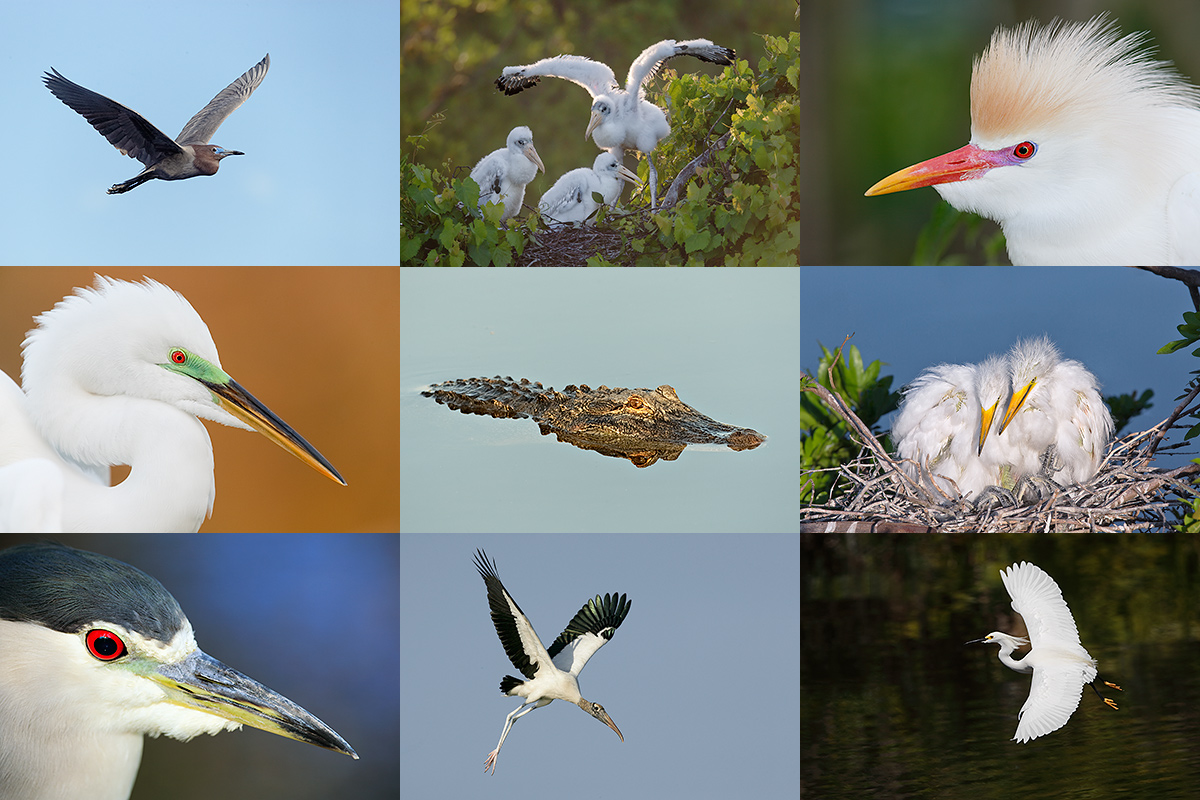
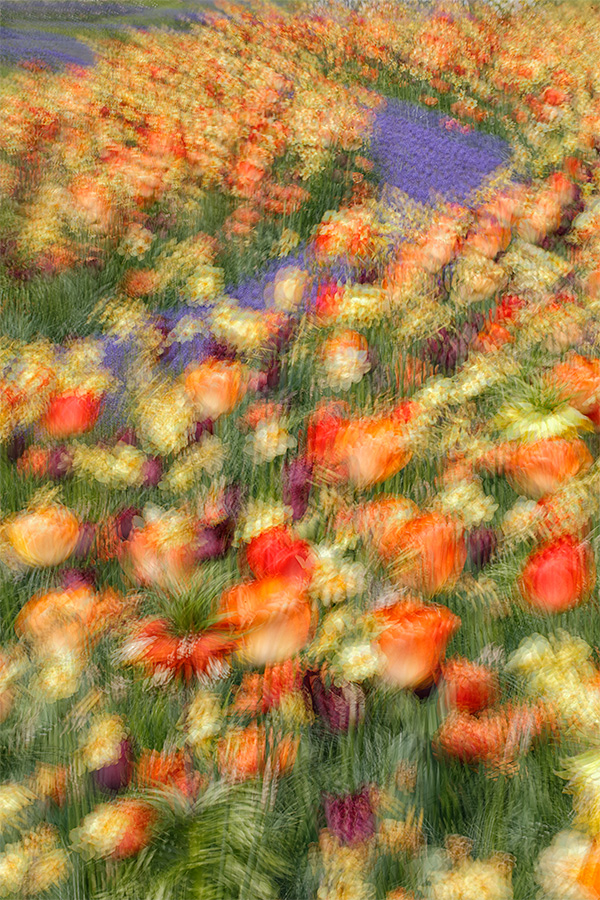
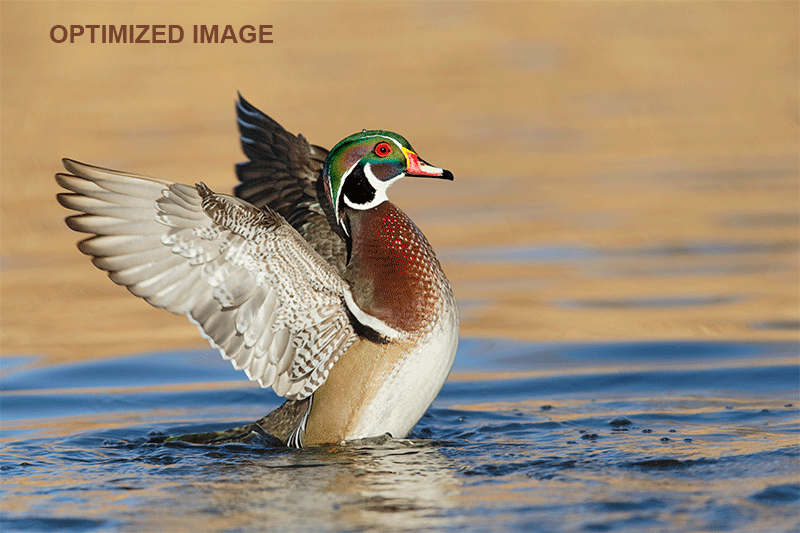
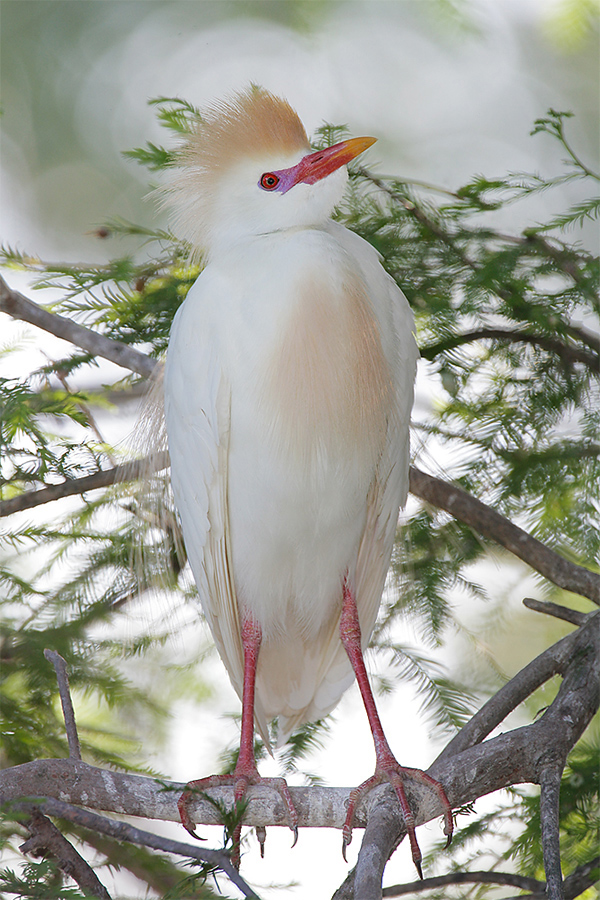
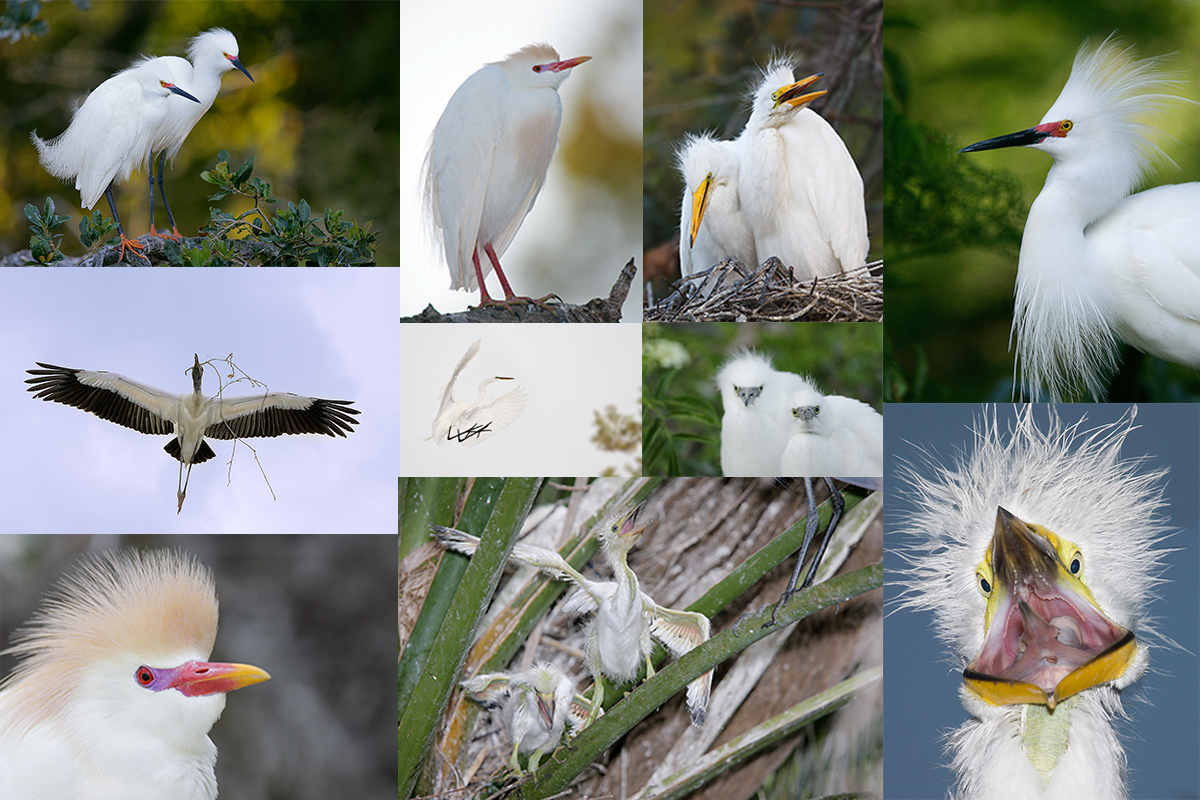

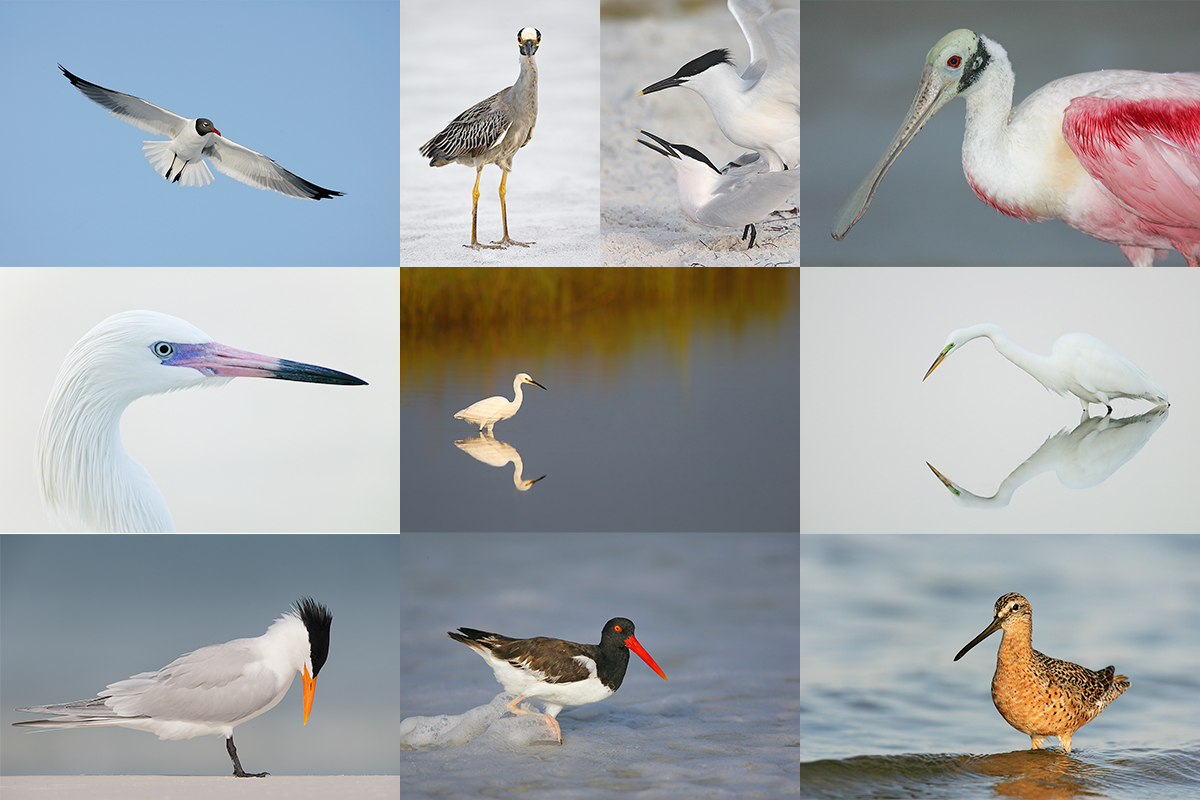













I’ve been trying to think what it was about this one that defeats the effort to mimik a painterly effect with a camera blur. There was that other one – in the series of horizontals you posted earlier, one of which was particularly nice. For that one, the tulips had been sufficiently blurred to translate into strips of color, with just the few red dots above the lowest strip to suggested (to me) a complementary impressionistic element. With this one, the impressionistic intent is pervasive. Unfortunately, at this level, the mechanical nature of your medium (the camera) is amplified to render an effect that is too even to successfully imitate what a human being would render with a paint brush.
It was never my impression to mimic anything. I simply asked a question of Jack. If you don’t like it you dot’t like it and I am fine with that. artie
ps: i am somewhat mystified that so many folks have a problem with me trying new things and having fun while doing so….
I find this blurred image too bright and there is really nothing to focus on. Yes I agree the texture added looks like a tapestry. Pleasing to me would be with a softer blend mode. and have one group of flowers dominant for the eyes to focus on. JMHO.
Artie,
The exposure is spot on and the composition exquisite; the taller red and white flower with the green tassel on top adds an interesting element to the foreground. Agree with Mary the image looks like a tapestry.
You convinced me a few years ago that the ability to produce pleasing blurs is a way of expanding your image creating abilities. Depending on environmental conditions and the subject matter you are photographing, creating blurs may be the only viable option.
Monte
Thanks for all this, Artie. As you know, I’m not a blur hater in general, although I wasn’t fond of the image in question. Once in a while, one of my photographs has been called “painterly,” and I think it’s a wonderful compliment. Using “painterly” in a negative sense is just weird.
Hi Art,
I am not sure why but this particular blur made me dizzy(not enough blur ? creating more double vision look). I do blurs occasionally but for fun and not very creative. I remember planned blurs from an airplane over the Pantanal with the blooming trees and also playing with push pull zoom of the 100-400mm when I first received the lens.. My idea of photography is have fun and do what pleases you-I personally like the chase-set up for birds and the natural surroundings(macro-plants)whatever.
I agree with Jay’s take on it. I don’t find blurs pleasing (at least very few of them; the one above I actually do find interesting and a little bit pleasing), but I don’t hate them either. Same thing with jazz, I don’t like it, but I really don’t hate it either. That’s not to say that I’ve never uttered the phrase “I hate jazz”, because I’m sure I have. That’s just indulging in hyperbole though; what it really means is that I like other sounds (or silence) more than jazz. Different strokes.
I must admit to hating most jazz. Sorry Arni 🙂 artie
Regarding the wood duck image, when you said “substantial” Photoshop work I misinterpreted that to mean something more than you did. I don’t think what you did would be called substantial in most contexts, would it? If you wanted to enter that in a contest that only allowed “minor Photoshopping”, would you consider that image ineligible?
In contests that allow minor image clean-up I am sure that I would be OK with the Eye Doctor work but would not enter it with the specular highlights work…. artie
ps: perhaps the word “substantial” helped folks to see stuff that wasn’t there 🙂
Regarding the haters…Perhaps we should not throw away the booboos we made when we first grasped a camera. As is said, “One man’s trash is another man’s treasure.”
While that may be true on very rare occasion, do understand that successful pleasing blurs are as a rule carefully envisioned, planned, and executed…. JIJO–junk in usually equals junk out 🙂 artie
Hi Mate, I do miss reading all; I am not most frequent participant.
Blur Haters: How can you “hate” art? I can get my head around not understanding or perhaps not liking – different strokes for different folks – but to say “I hate…” something can only indicate that something is lacking in the hater. Probably understanding/knowledge. There is an awful lot of art I do not like – full stop – there is no art that I hate. And, even the art that I do not I cannot help but respect the skill that created the art in the first instance.
I am having a rough time medically; no more serious land/seascapes – no energy for the golden hours; no ability to seriously walk or hike anywhere. And no more birds in flight.
I am now turning to a lot of what Denise does, learning at the pace of a snail and enjoying the learning process. Blurs, macros, and the like do not require the energy expenditure.
A word to the wise to the “blur haters”: don’t hate something you may choose to do in the future rather than hang up your spurs completely.
Cheers Artie,
Jay
PS: Congrats on the amazing streak! Major celebration at 365.
Thanks on all counts Jay. Sorry to hear that your energy is low. You might remember that I suggested quite a while back that your doctors were idiots and that you get in touch with Dr. Cliff Oliver. Like most thirsty horses you chose not to take that advice…. I do wish you the best. artie
Perhaps everyone is somewhat right…..
1) I LOVE the image above. It looks like tapestry. I love tapestries. It would be awesome printed on some sort of rag paper.
2) Some people’s eyes play weird focusing tricks on them. For example, some people can easily bring stereograms into focus (I can), but it is much more difficult if the eyes are very different from each other. It has also gotten harder as I’ve gotten older and my close-up vision has deteriorated. Don’t discount that some people may actually get a headache from looking at it. And don’t discount that some of the blur techniques create an ambiguity that is actually exploited in some techniques such as stereograms and some people may be half-consciously keying into that. Some people seem to be able to more easily turn off the need for focus. I’ve often wondered it it has to do with eyesight in general. If one has poor eyesight (as I have pretty much had since a child), you can’t see details without glasses, so you get accustomed to things being out of focus. It’s “reality”, ironically. I don’t see any reason to turn this into critical argument. We can’t see out of someone else’s eyes.
3) The argument about turning a photo into a painting being a gimmick is a load of c _ _ p, and I WILL turn that into a critical argument. There is a notion of realist painting. Some paintings are so realistic that you have to look twice to see that they are not photos. So what in the name of heaven is wrong with creating a photo that you have to look twice to see is not a painting??? Some people are just unwilling to let go of the incredibly narrow band of criteria of what constitutes a good photograph. My opinion in a nutshell, is that having ultimate control over the camera means being able to do things either in focus or out of focus AT WILL. Also being able to control exposure at will. And control is what it is about. Ultimately, the control needs to be so good and so absolute that you can do anything you can imagine. THAT is the ultimate goal. And this is not a single bit different than being a musician. EVERY musician aims to have such a perfect technical master of his instrument that he/she can do anything, including play out of tune if the composer asked for it.
Now you’ve got me started!
Thanks Mary. It is good to see you stopping by :). As you might guess, I pretty much agree on all counts plus, I learned a few new things about vision. artie
While I rarely create blurred images (at least not on purpose), I nonetheless appreciate them. I view this as analogous to listening to music although I do not create any.
For me, a big thanks to Denise. Before bird photography I hated to take photos of flowers. But then when Denise came along, she showed me there’s more than one way to see a flower (or landscape for that matter). Now, because of you two, I have something else to photograph. Am I good at it? Nah, I still suck like I did 10 years ago. But I know I enjoy myself a lot more.
I’d be curious for the blur haters, what their art background is? For example, I love blurs and the paint look probably because I loved drawing and painting when I was in school.
Doug